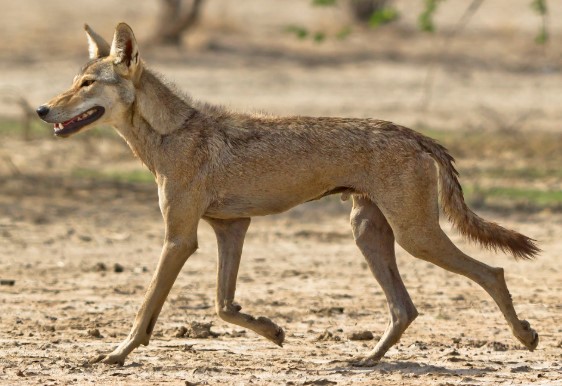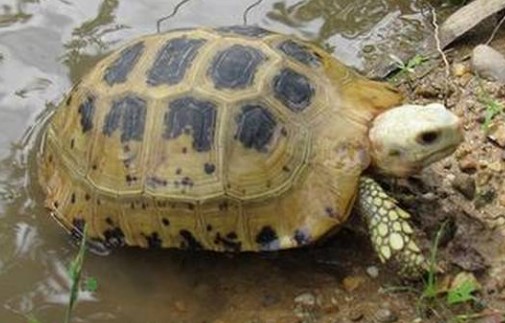Contents
- Enable longer work hours: CII to Centre
- Indian grey wolf sighted
- Sal forest tortoise habitat
- Deep-space ice on a comet
- NFHS for population surveillance for coronavirus
- India set to cover the globe with exports of masks
ENABLE LONGER WORK HOURS: CII TO CENTRE
Focus: GS-II Social Justice
Why in news?
The Confederation of Indian Industry (CII) has recommended that the government issue guidelines directing direct workers to rejoin duty.
The recommendation, along with several more, were made at a meeting between CII representatives and Labour and Employment Minister.
What were the recommendations made by the CII?
- Those failing to report for work must be made liable for action under the Employment Standing Order Act and the Industrial Dispute Act.
- States needed to put the revision of minimum wages on hold for at least one year and that normal working hours of employees across sectors are increased by allowing four hours overtime per day.
- The workers’ consent has to be taken for the overtime.
- Migrant workers residing in shelter homes or available locally near the industrial belts be mapped and deployed to the nearest factories.
- The provisions of layoff under the Industrial Dispute Act be extended to commercial establishments as a job retention measure for workers having no work. For the period of layoff, such workers shall remain on rolls and will get reduced wages along with statutory benefits such as ESIC and PF. Further, it sought removal of labour advisories issued under the Disaster Management Act that prohibits employers from any wage reduction, layoff and retrenchment of workers.
- The Pradhan Mantri Garib Kalyan Yojana ought to be extended to more establishments.
- Employees’ State Insurance Corporation and the EPFO should take up massive campaigns and draw up a communication strategy to inform workers to rejoin work.
About Confederation of Indian Industries CII:
- The Confederation of Indian Industry (CII) is an industry association in India which was founded in 1895.
- CII is a non-government, not-for-profit, industry-led and industry-managed organization.
- It has over 9,000 members, from the private as well as public sectors, including SMEs and MNCs.
- CII works with the Government on policy issues.
- CII has been a catalyst of change in India’s economic policy reforms. CII played a very important role during economic liberalisation in 1991.
- CII correlates with Government, NGOs, and civil society to help industry flourish effective programs for social development.
- The CII Publications include Reports that are widely respected.
Functions of CII
- To identify and strengthen industry’s role in the economic development of the country
- To act as a catalyst in bringing about the growth and development of Indian Industry
- To reinforce industry’s commitment to society
- To provide up-to-date information and data to industry and government
- To create awareness and support industry’s efforts on quality, environment, energy management, and consumer protection
- To identify and address the special needs of the small sector to make it more competitive
- To promote cooperation with counterpart organisations
- To work towards the globalisation of Indian industry and integration into the world economy
Extra notes:
- Confederation of Indian Industry (CII) has launched a Fiscal Performance Index (FPI) to assess state and central budgets.
- The Index incorporates qualitative assessments of revenue expenditure, capital expenditure, revenues, fiscal prudence and the level of public debt.
-Source: The Hindu
INDIAN GREY WOLF SIGHTED
Focus: GS-III Environment and Ecology
Why in news?
A group of conservationists studying and camera-trapping leopards in the Cauvery Wildlife Sanctuary has stumbled upon an Indian grey wolf (Canis lumpus pallipes).
Why is it significant?
- This is reckoned to be its first-ever documentation of Indian grey wolf in Chamarajanagar district.
- What is significant is that this indicates the presence of all four large canid species found in southern India (dhole, Indian wolf, jackal, and Bengal fox) in Chamarajanagar.
- In Karnataka, the wolf is found in isolated pockets in the drier areas.
Indian Grey Wolf

- The Indian wolf (Canis lupus pallipes) is a subspecies of grey wolf that ranges from Southwest Asia to the Indian Subcontinent.
- It lacks a luxuriant winter coat due to it living in warmer conditions.
- The Indian wolf travels in smaller packs and is less vocal than other variants of the grey wolf.
- Indian wolves are nocturnal and hunt from dusk to dawn.
- The Indian Wolf is an ENDANGERED SPECIES in Schedule I of Indian wildlife according to the Wild Life (Protection) Act, 1972.
- It is also in Appendix 1 of the Convention on International Trade in Endangered Species of Wild Fauna and Flora (CITES).
- A highly endangered and threatened Indian grey wolf species mostly survives on grasslands, scrub forests, and rarely in dry deciduous forests.
- Though the species is distributed widely, it is threatened largely because of habitat loss and retaliatory killing.
- Conflict with humans for livestock depredation, depletion of prey species (like blackbuck, hare) due to livestock, exaggerated public fear regarding their danger, and fragmented habitats that are too small for populations with long-term viability are threatening their survival today.
- Indian wolf numbers are suspected to be lower than that of tigers.
Read More about Wildlife Protection Act at: https://www.legacyias.com/wildlife-protection-act-1972-for-upsc-exam/
-Source: The Hindu
SAL FOREST TORTOISE HABITAT
Focus: GS-III Environment Ecology
Why in news?
Also known as the elongated tortoise (Indotestudo elongata), the sal forest tortoise, recently assessed as critically endangered, is heavily hunted for food.
23 of the 29 species of freshwater turtle and tortoise species found in India come under the threatened category in the IUCN red list and are under severe existential threat due to human activities.
Sal Forest Tortoise

- The Sal Forest Tortoise is widely distributed over eastern and northern India and Southeast Asia.
- It is collected both for local use, such as decorative masks, and international wildlife trade.
- According to the IUCN the population of the species may have fallen by about 80% in the last three generations (90 years).
- There is little information on the population sizes of the sal forest tortoise, or any such species, mainly because they are so rare, live in remote areas of the forest and funding opportunities to study them are few.
The Issues with their Habitat and Protection
- The area designated as a protected area network has only a small overlap with the actual habitat it roams around in. Over 90% of the potential distribution of the species falls outside current protected area’s network
- 29% of the predicted distribution of the species falls within high occurrence fire zones or areas where there is management burning.
- Especially in northeast India, which is a suitable habitat for the species, they experience jhum fire. (Jhum fire = slash and burn cultivation)
- Such an intervention may not only directly kill the animals but also open up habitats, which, in turn, increases the chance of people finding the tortoise easily.
- Protected areas are designated in a largely mammal-centric way. Many reptiles and amphibians which are equally threatened live outside protected areas where exploitation risk is more.
-Source: Times of India
DEEP-SPACE ICE ON A COMET
Focus: GS-III Science and Technology
Why in news?
Deep-space ice formed in one of the coldest parts of the cosmos has been found in our solar system.
21-Borisov was in the news in the past: It was the first such identified interstellar comet to have come close to the Sun from another stellar system.
Details

- Deep-space ice was carried on a comet that formed far from its host star, where temperatures could reach minus 250 degree Celsius.
- Named 21/Borisov, the comet 800 metres wide with a tail almost 1,60,934-km long, was spotted just outside the orbit of Mars.
- Scientists have found the coma- a fuzzy outer layer of light- contains water and a lot of carbon monoxide.
- Carbon monoxide, poisonous to humans, is a common gas in space and forms as ice only in the most frigid locations.
- The presence of so much carbon monoxide suggests 2I/ Borisov was formed — in a very cold outer region of its home star system or around a star cooler than the Sun.
What are Comets?
- A comet is an icy, small Solar System body that, when passing close to the Sun, warms and begins to release gases, a process called outgassing.
- This produces a visible atmosphere or coma, and sometimes also a tail.
- These phenomena are due to the effects of solar radiation and the solar wind acting upon the nucleus of the comet.
- Comet nuclei range from a few hundred meters to tens of kilometers across and are composed of loose collections of ice, dust, and small rocky particles.
- The coma may be up to 15 times Earth’s diameter, while the tail may stretch one astronomical unit.
- Comets have been observed and recorded since ancient times by many cultures.
-Source: The Hindu
NFHS FOR POPULATION SURVEILLANCE FOR CORONAVIRUS
Focus: GS-III Science and Technology, Disaster Management
Why in news?
There have been proposals for the use of the Demographic and Health Survey (DHS) framework to ascertain the prevalence of COVID-19.
It has been suggested that the scientific and logistical infrastructure of India’s National Family Health Survey (NFHS) be leveraged to conduct a random sample-based population surveillance to track coronavirus.
Used earlier (NFHS for HIV surveillance)
India was projected to have 25 million HIV-positive individuals, with a 3-4% prevalence in adults, but when a random-sample-based population surveillance was conducted to test for HIV in the general population, the estimates sharply reduced to 2·5 million, with a 0.28% prevalence in adults.
Layering a COVID-19-focused data-collection effort on to the NFHS infrastructure would keep operational costs low, with the major expense being laboratory costs for testing samples.
Prevalence and testing
- If a disease is widespread, meaning there is higher prevalence, its detection is easier, needing only a smaller sample.
- Conversely, if it is rare, it is harder to find and a larger sample should be tested to detect that.
- This sampling approach could be implemented at the State or district levels.
- India and about 90 countries with established DHS sampling frames can implement this surveillance system.
- The idea is that population-based testing is important for any decision making with some repeated cross-sectional testing of the same.
-Source: The Hindu
INDIA SET TO COVER THE GLOBE WITH EXPORTS OF MASKS
Focus: GS-III Disaster Management
Why in news?
- India is expected to emerge as one of the main exporters of masks with the habit of its wearing catching up on people worldwide in the backdrop of the COVID-19 pandemic.
- Some of the major suppliers are China, Thailand, Vietnam, Indonesia, Brazil and Argentina.
Opportunity for India
- India can be a fantastic alternative to China and it has huge export potential for masks.
- In Europe, there is a major need for masks manufactured in India for protection against the COVID-19 outbreak since the combined import from China and local production within the European Union is not enough to meet the increasing demand.
- China covers only half of the global demand and India can enter the market as the second-largest producer in the world, when the Indian government lifts the ban on export of masks and PPEs.
- Currently, the number of cloth manufacturers are more. When the Union government permits export of masks, overseas buyers will ask for certifications and standards and manufacturers, who are able to meet these requirements, will export.
- More machinery is imported to make top quality masks. What the country needs is a full-fledged testing facility for masks.
- Some companies are coming out with woven cloth masks that have anti-bacterial and water-repellent coatings. The masks should be able to meet, probably, more parameters for exports.
-Source: The Hindu




